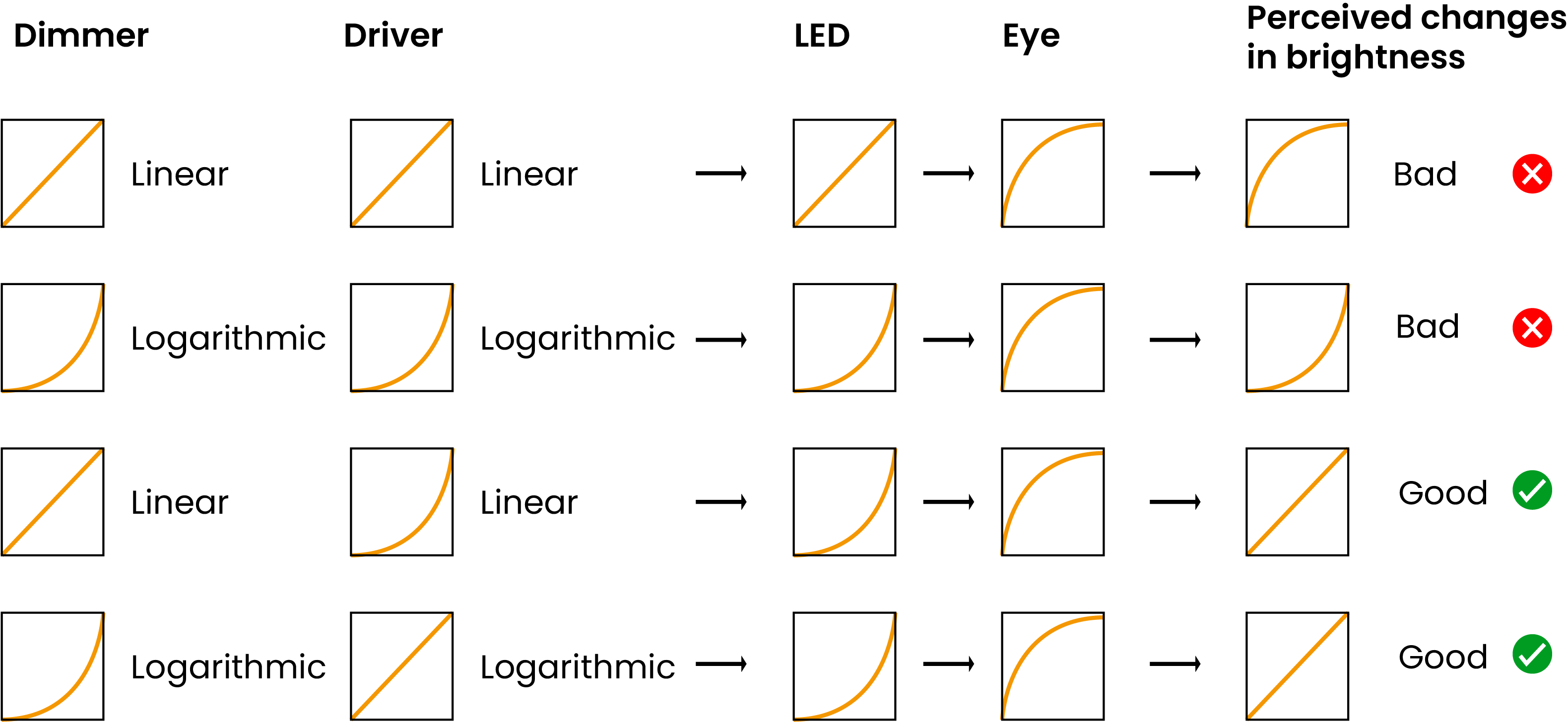Lux Lighting Dimming Modes Explained
Lux dimmers provide multiple dimming modes to provide the best experience possible, such as fans or motors that can be controlled within the device specifications.
-
Auto-Detect: Automatically detects the dimming mode (Forward Phase or Reverse Phase only) when the device powers on or when the mode is changed to Auto-Detect.
Note: It takes up to 10s for the device to detect the dimming mode.
-
Forward Phase: Forward phase cuts the leading edge of the AC sine wave to dim a load. It is designed for resistive or magnetic low-voltage (MLV) loads, including incandescent, halogen, and fluorescent.
-
Forward Phase - High Power Factor LED Mode: Optimized forward phase dimming for LED loads with high power factor ratings of 0.75 or greater which are designed to have a current profile similar to an incandescent load. This mode can reduce light fluttering when dimming High Power Factor LED loads at wattage levels less than 40 watts. This mode must be manually selected.
-
Reverse Phase: Reverse phase cuts the trailing edge of the AC sine wave to dim a load. Designed for electronic low-voltage (ELV) loads, this mode most compatible with LED loads.
-
Switch Mode: Set the device to operate as a switch to control non-dimmable loads such as fans or other low power motors that operate within the device's specifications.
Note: Switch Mode requires a neutral connection.
-
Switch Mode - High Wattage LED: Resolve false short circuit faults caused by high inrush current generated by high wattage (more than 300W) non-dimmable loads. This mode should not be used for magnetic or inductive loads.
Caution: Switch mode - High Wattage LED should not be used for magnetic or inductive loads as it can damage the load.
Note: Switch Mode - High Wattage LED requires a neutral connection.
When to not use Auto-Detect
If the light is flickering or buzzing, you may need to manually set the device to forward or reverse phase dimming. Check your light/fixture specifications for the phase type to use for the misbehaving load. You can also optimize dimming for low wattage LED loads with high power factor.
Dimming Curves
Adjusting the Dimming Curve affects how the light is perceived. Lux provides the following dimming curves for optimal performance:
- Linear: The dimmer's rate of dimming changes at the same rate as brightness level.
- Logarithmic: The dimmer's rate of dimming changes slower at lower levels and faster and brighter levels. A Logarithmic dimming curve is optimal for linear LED drivers. Typically the best option for LED loads.
- S-Curve: The dimmer's rate of dimming changes slower at the lower and upper levels, but at a faster rate for brightness levels in the middle.
Test loads with different Dimming Curves to find the best performance. Some bulbs/fixtures are designed for specific dimming curves. Refer to the bulb/fixture specifications for the recommended dimming curve.
Note: The Min and Max On levels reset when you change the Dimming Curve. Be sure to reconfigure them.

